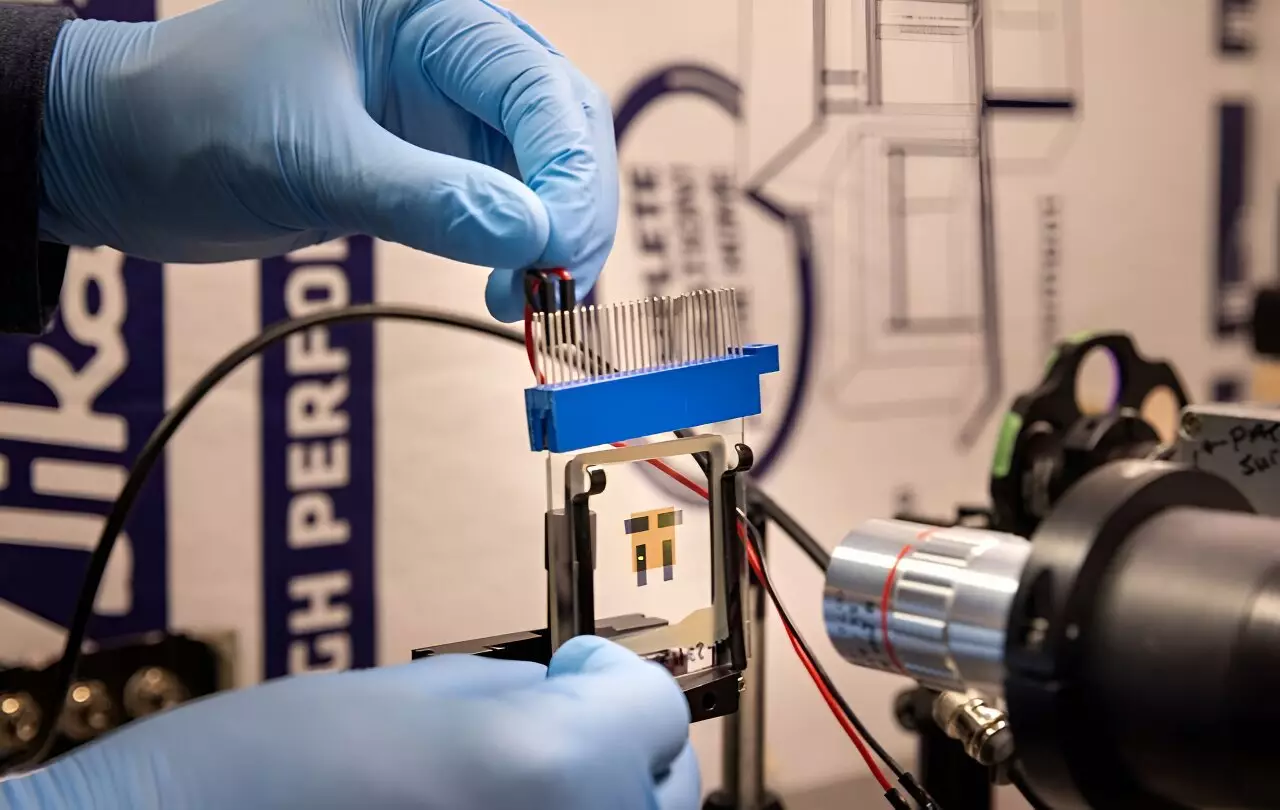Recent advances in organic light-emitting diode (OLED) technology herald a transformative era for night vision devices. Researchers from the University of Michigan have unveiled a new type of OLED that promises to supplant traditional bulky night vision goggles with lighter and more practical alternatives. The findings, published in the esteemed journal Nature Photonics, not only showcase innovations in night vision technology but also introduce concepts that could redefine computer vision systems.
Traditionally, night vision devices utilize a complex system of image intensifiers that convert near-infrared light into a multitude of electrons. These electrons then flow through a vacuum into a thin disc packed with microchannels, where after a series of collisions, they release vast numbers of secondary electrons. This process exponentially amplifies the incoming light signal—by a staggering factor of 10,000—allowing users to perceive their environment in the dark. However, this system’s clunky design coupled with its energy-intensive operations makes it less than ideal for prolonged use.
The newly developed OLED technology presents significant advantages over traditional optics, notably a reduction in weight and power requirements. This OLED device effectively converts near-infrared light to visible light while amplifying it more than 100 times. Importantly, this is achieved without the high voltage and cumbersome vacuum chamber that complicates image intensifiers. According to Chris Giebink, a professor of electrical and computer engineering at the University of Michigan, the thin-film stack utilized in this OLED model is less than a micron thick. To put this into perspective, it is approximately fifty times thinner than a human hair.
Furthermore, this revolutionary design presents an opportunity for enhancements in energy efficiency, thus potentially extending the operational life of batteries in night vision devices. By dramatically lowering the energy needs of these systems, users may benefit from longer usage periods in critical scenarios, merging practicality with innovation.
At the heart of this technological marvel lies a sophisticated integration of a photon-absorbing layer and a five-layer OLED stack. The photon-absorbing layer serves to convert incoming infrared light into electrons, which then glide through the OLED layers converting them back into visible light photons. Notably, researchers intend for this device to produce five photons for every electron that traverses the OLED structure. This output not only enhances visibility but also establishes a self-amplifying feedback loop whereby some photons are reabsorbed, generating even more electrons and further increasing the light output.
This cycle, previously unachievable in OLEDs, marks a significant milestone, as per lead author Raju Lampande, who emphasized that this is the first instance of high photon gain demonstrated in a compact thin film device. This advancement could pave the way for further optimizations that might see even higher levels of amplification, transforming how night visibility is approached.
Another remarkable feature of this OLED technology is its memory behavior, characterized by hysteresis. Unlike standard models that produce consistent light output correlated directly to input intensity, this new OLED can retain a ‘memory’ of past light inputs, allowing it to sustain output even after the light source has been removed. This characteristic introduces new possibilities for computer vision applications, mimicking the adaptive nature of human vision where responses are influenced by past experiences.
Such memory retention could potentially revolutionize image processing tasks, enabling systems to interpret and classify images akin to how biological neurons process stimuli. The ability to recall past inputs could exude a new level of sophistication in machine learning algorithms, potentially reducing the need for separate computational units for data processing.
Crucially, the researchers developed their breakthrough device using readily available materials and techniques already entrenched in OLED manufacturing processes. This approach not only lowers costs but also sets the stage for future scalability in production, making advanced night vision technology more accessible to various sectors. As the demand for lightweight, energy-efficient, and powerful optical systems grows, this OLED solution appears poised to meet those needs while paving the way forward in both night vision enhancement and computer vision innovation.
The intersection of OLED technology and night vision represents an exciting trajectory toward more efficient, accessible, and capable optical devices. With further investigations and refinements on the horizon, the innovations emerging from this research could indelibly change the landscape of visual technologies.



Leave a Reply